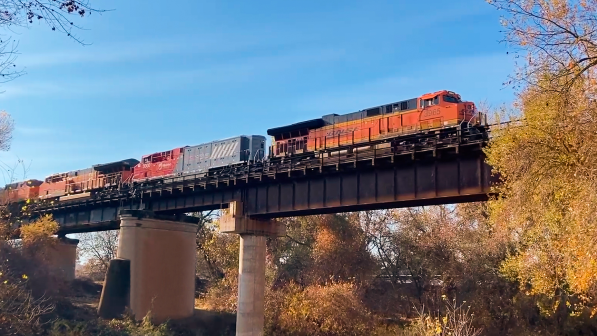The battery locomotive is situated in a consist between two Tier 4 locomotives, creating a battery-electric hybrid consist. When running on the mainline, both the battery-electric and diesel locomotives will power the train.
The pilot test will run from January until the end of March. The battery-electric locomotive is expected to reduce the environmental impact from emissions along the route, while improving the fuel economy for the entire consist by at least 10%. If the initial pilot proves successful, BNSF will look to expand testing to other locations and operating conditions on its network.
“We’ve got everything in place and we’re ready to see how this next-generation locomotive performs in revenue service,” says Mr John Lovenburg, BNSF vice president, environmental. “BNSF is focused on continuing to reduce our environmental impact, and we’re committed to doing our part to test and assess the commercial viability of emerging technologies that reduce emissions.”
The initiative builds on existing BNSF investments in sustainable technologies including idle control, electric wide-span cranes, battery-electric shunters, automated gates at its intermodal facilities, and Tier 4 locomotives. The battery-electric locomotive features an overall energy-management system, including onboard energy storage that, when coupled with advanced system-optimisation controls, will improve consist and train performance.
“The FLXdrive is the world’s first 100% heavy-haul battery-electric locomotive that optimises the total energy utilisation of the entire locomotive consist,” says Mr Alan Hamilton, Wabtec vice president, engineering. “This technology works in a manner very similar to how electric vehicles use regenerative braking. It’s a significant step forward for the rail industry and will change the course for even cleaner, more energy-efficient transport.”
The pilot is part of a $US 22.6m grant awarded to BNSF and the San Joaquin Valley Air Pollution Control District from the Zero- and Near Zero-Emission Freight Facilities (Zanzeff) project by the California Air Resource Board to pilot several emissions-reducing technologies in and around railyards.
The Zanzeff project is part of California Climate Investments, a multi-billion-dollar state-wide initiative to reduce greenhouse gas emissions, strengthen the economy and improve public health and the environment, particularly in disadvantaged communities.
Watch Wabtec’s battery-electric locomotive video for more details on how it works.

